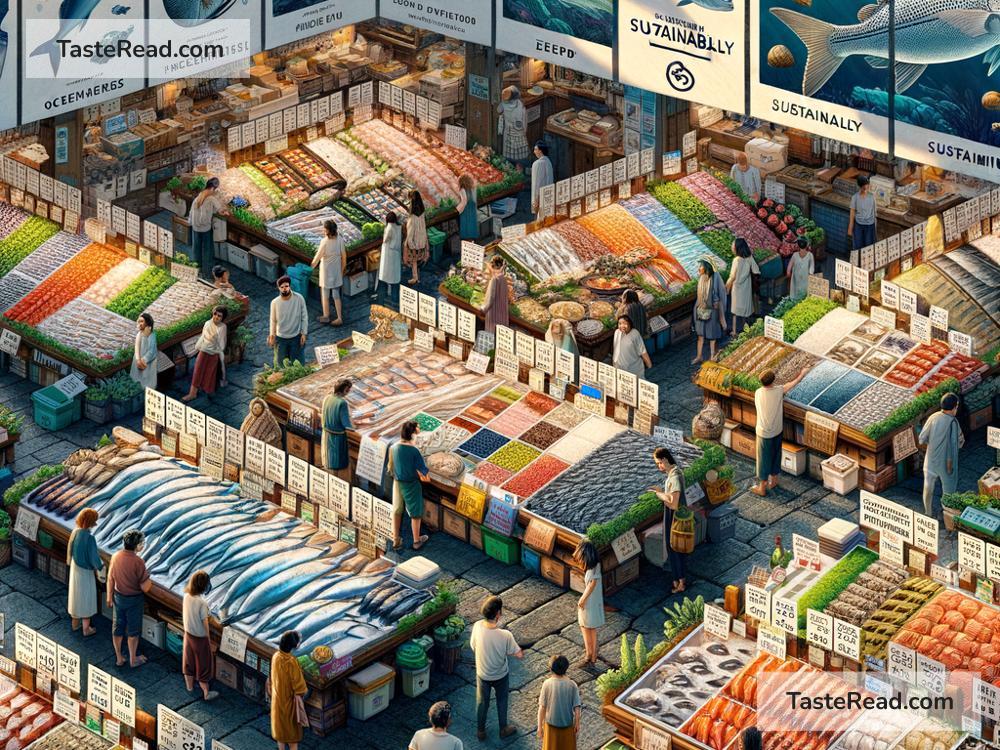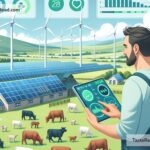The Future of Sustainable Seafood: Putting the Oceans First
Seafood has always been an important part of human diets. From fish to shrimp, many people around the world enjoy meals that come from the ocean. But as the demand for seafood grows, our oceans are facing challenges. Overfishing, pollution, and climate change are putting marine life at risk and threatening the health of the oceans. If we want to keep enjoying seafood in the future, we need to make smarter decisions about how it is caught, farmed, and sold. That’s where sustainable seafood comes in.
What is Sustainable Seafood?
Sustainable seafood means seafood that is caught or farmed in ways that protect the environment and make sure fish populations stay healthy. It’s all about meeting our needs today without hurting the ocean’s ability to provide for future generations. Sustainable practices ensure that marine ecosystems are maintained, overfishing is avoided, and the livelihoods of local fishing communities are protected.
Why Do We Need Sustainable Seafood?
The oceans are under pressure like never before. Around the world, fish populations are shrinking because fishing boats take more fish than the oceans can reproduce naturally. Many species that were once abundant, like bluefin tuna and cod, are now endangered because of overfishing. On top of this, plastic pollution, oil spills, and warming waters from climate change are making life harder for marine animals.
If we don’t act now, we risk losing not only seafood but also the important roles oceans play in balancing our planet’s climate and supporting biodiversity. By choosing sustainable seafood, we can help restore fish populations, protect marine habitats, and reduce the environmental impact of fishing and aquaculture (fish farming). Sustainable choices give the oceans a chance to recover and thrive.
Innovations in Sustainable Seafood
The future of sustainable seafood depends on innovation, technology, and smarter practices. Here are some exciting steps being taken to improve seafood sustainability:
-
Aquaculture with a Green Focus: Aquaculture, or fish farming, is an important way to meet the global demand for seafood. However, some fish farms pollute surrounding waters and harm the environment. Modern aquaculture is putting sustainability first by using eco-friendly methods. For example, some farms raise fish in tanks instead of in open waters, which reduces the chances of pollution. Others recycle waste from fish farms to serve as fertilizer for crops.
-
Plant-Based and Lab-Grown Seafood: In the same way that plant-based meat alternatives have gained popularity, scientists are creating plant-based seafood substitutes that taste just like the real thing. For example, shrimp made from algae or vegan “fish” made from soy and pea proteins are entering the market. Another exciting invention is lab-grown seafood. Scientists take small samples of fish cells and grow them into meat in a lab, without the need to catch or farm fish. These methods significantly reduce pressure on wild fish populations.
-
High-Tech Fishing Gear: Technology is helping fishermen catch seafood more responsibly. For example, devices like nets that only catch certain species allow fishermen to avoid catching endangered marine animals accidentally. Artificial intelligence is also being used to track fish populations and recommend fishing spots in a way that protects ecosystems.
-
Traceability of Seafood: Many companies are now using blockchain technology to track seafood from ocean to plate. This means consumers can scan a code on their package of fish and see where it was caught, how it was transported, and whether it was sourced sustainably. This transparency helps buyers make informed choices.
What Can We Do as Consumers?
You might be wondering how you can contribute to the future of sustainable seafood. Fortunately, every individual can make a difference with their choices.
-
Buy Sustainably-Certified Seafood: Look for labels like MSC (Marine Stewardship Council), ASC (Aquaculture Stewardship Council), or Fair Trade Certified. These certifications ensure that seafood is responsibly sourced.
-
Reduce Seafood Waste: Don’t let seafood go to waste. If we waste less food, there will be less demand for overfishing.
-
Try Alternatives: Consider plant-based or lab-grown seafood if available. They’re not only eco-friendly but also innovative ways to enjoy seafood flavors.
-
Educate Yourself: Learn about the seafood you eat. Is it overfished? Is it farmed responsibly? Knowledge is power, and informed choices protect our oceans.
-
Support Policies for Ocean Conservation: Advocate for laws and policies that regulate fishing, prevent pollution, and create marine protected areas. Governments play a big role in protecting our oceans, and your voice matters.
A Shared Responsibility
The future of sustainable seafood is about the choices we make—whether we’re fishermen, seafood farmers, grocery stores, restaurants, or casual diners. Everyone has a role in creating a system where seafood is produced responsibly and ecosystems are protected.
If we work together, the oceans can heal. Scientists and fishing industries are already finding solutions, but spreading awareness and making conscious decisions are just as important. For most of us, sustainable seafood begins with what we put on our plates.
Looking Ahead
The future of sustainable seafood is hopeful but depends on action today. Technology, innovation, and education are advancing rapidly, giving us tools to ensure oceans can continue to thrive. By investing in these solutions and taking steps to protect marine life, we can enjoy seafood responsibly while keeping the ocean alive for generations to come.
Let’s put the oceans first. Sustainable seafood is not just a trend—it’s the key to building a healthier, more balanced relationship with the planet and its resources. The choices we make now will decide the seafood story of tomorrow.


